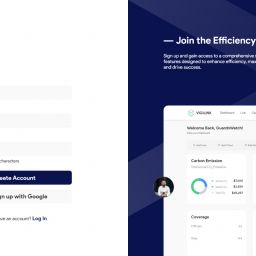Workforce Management Software for Healthcare IT: Enhancing Efficiency and Patient Care
In the rapidly evolving landscape of healthcare, the role of technology has become increasingly critical. Healthcare IT departments are tasked with managing complex systems, ensuring data security, and optimizing workflows to deliver high-quality patient care. However, with the growing demands and complexities, traditional manual methods of workforce management fall short. This is where workforce management software specifically tailored for healthcare IT plays a pivotal role. In this article, we will explore the benefits and significance of workforce management software for healthcare IT departments, and how it enhances efficiency and patient care.
1. Streamlined Scheduling and Resource Allocation
Workforce management software for healthcare IT streamlines the process of scheduling IT professionals based on their skills, certifications, and availability. Automated scheduling tools ensure that the right IT staff is assigned to tasks and projects, minimizing delays and maximizing efficiency. With a clear overview of resource allocation, IT managers can optimize staffing levels, avoiding overburdening or underutilizing team members.
2. Efficient Incident Management
In a healthcare IT setting, quick response times to incidents and technical issues are crucial. Workforce management software enables IT teams to effectively track, prioritize, and resolve incidents through a centralized platform. This not only reduces downtime but also improves patient care by ensuring that critical systems and applications are up and running.
3. Compliance and Data Security
Healthcare organizations handle vast amounts of sensitive patient data, making compliance and data security top priorities. Workforce management software assists in ensuring that IT professionals are up-to-date with the latest regulations and protocols. Additionally, it helps track access to critical systems and applications, reducing the risk of unauthorized access and potential data breaches.
4. Workload Balancing and Burnout Prevention
Healthcare IT professionals often face high-pressure environments with heavy workloads. Workforce management software helps IT managers distribute workloads evenly across the team, reducing the risk of burnout and employee turnover. By monitoring work hours and overtime, the software can also alert managers to potential burnout indicators, allowing for timely intervention and support.
5. Skill and Training Management
Healthcare IT professionals require specific skills and certifications to work with specialized healthcare systems and technologies. Workforce management software helps IT departments track and manage employees’ certifications and training records. This ensures that the team is well-equipped to handle the latest technologies and that any skill gaps are identified and addressed promptly.
6. Forecasting and Planning
Workforce management software provides healthcare IT departments with valuable analytics and reporting capabilities. These insights can be used for workforce forecasting and strategic planning. By understanding peak demand periods and future staffing needs, IT managers can ensure the right talent is available when needed, minimizing downtime and improving overall departmental efficiency.
7. Enhanced Collaboration and Communication
In a fast-paced healthcare environment, efficient communication and collaboration among IT team members are essential. Workforce management software often includes communication features such as real-time messaging and collaboration tools. This enables seamless information sharing and fosters a culture of teamwork and cooperation.
Conclusion:
In conclusion, workforce management software tailored for healthcare IT is an invaluable tool in modern healthcare organizations. It empowers IT departments to streamline operations, optimize resource allocation, and enhance patient care. By automating scheduling, ensuring compliance, and promoting skill development, the software enables IT professionals to focus on delivering efficient and effective IT services to support healthcare providers. Ultimately, the adoption of workforce management software leads to improved operational efficiency, reduced risks, and enhanced patient experiences, making it an indispensable asset for healthcare organizations in today’s digital age.
















